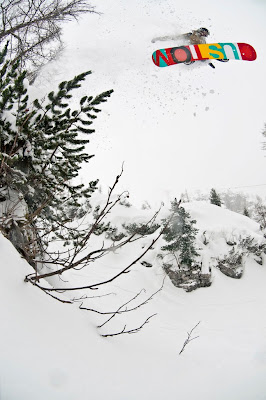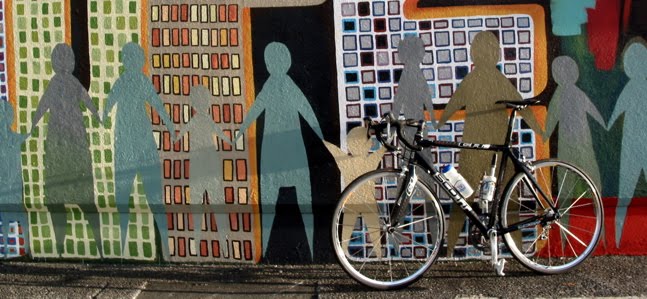“I have a rope,” said Martin, the guide. “I can lower you down if you don’t think you can do it.”
We are standing on our skis and snowboards above a steep narrow chute that squeezes through two massive, vertical rocky walls. There is no way down other than straight through the chute, it’s too tight to try and make a turn. Martin tells us that beyond lies a steep field covered in untracked powder snow.
I have a lump in my throat and I really don’t know if I want or can do this. This is real skiing, Austrian style. Welcome to the Krippenstein, one of the wildest places to test your skills and nerves on snow.
The Krippenstein markets itself as freesports arena, a ski resort with a minimum of pistes, rules or in fact signs telling you to watch out for cliffs or avalanches. There are two large gondolas that take skiers from the valley floor at 600m to the 2100m-high peak.
One 11km-long groomed run snakes round the back of the mountain to the bottom, but it’s the huge swathe of wild, uncensored terrain in between that makes the place special and attractive to freeskiers around the world. If you’ve mastered the toughest runs at the resorts and are looking for the next challenge, the Krippenstein is the place to come.



Suffering the humiliation of being lowered down by a rope was out of the question and I suspect Martin was bluffing to get us going. Chris decides not to hang around, leaping off an ice-covered rock, directing his snowboard straight through the gap and disappearing from sight. Moritz went next, completing the same manoeuvre and then it was my turn.
I slid sideways down towards the end of the rock and wondered how long it had been since I had done anything this crazy. I reached the point of no return, tried to put the consequences of screwing this move up out of my mind and pointed my skis into the chute.
A short drop from the rock and the skis plopped into the snow. I shot out through the chute into the powder field and carved five delicious turns into the snow.
Our small group has come here to spend a guided weekend of skiing and to learn how to avoid and deal with avalanches. We’re experienced skiers and spend a lot of time off-piste but have realised that our knowledge of what can go wrong is limited.
An average of 26 skiers die in Austria alone each winter in avalanches and accidents. A fair proportion of them are holidaymakers who are sold images of powder and venture away from the safety of the slopes without being aware of the dangers.
We’ve chosen to pay Martin, who works for Outdoor Leadership, a professional guiding company based at nearby Bad Goisern, to teach us the basics and show us around the mountain. Those who haven’t got all the equipment are kitted out with avalanche beacons, shovels and probes.
Fifteen minutes and two gondolas later, we reach the summit. It’s blowing a gale and snowing and Martin immediately leads us down a steep slope pockmarked with rocks to a small plateau where we are shown how to properly use the avalanche beacons.
Locating a ‘burial victim’ takes longer than one realises. In a real life situation the search party has just minutes to find and dig them out so knowing how your equipment works is crucial. We do a couple of mock searches, using our beacons to find a unit hidden somewhere in the snow. It takes a bit longer than expected, in fact a lot longer than an actual person would want to be under the surface without air.
But Martin is cheery and as we head off down the mountain, he tells us the key is practise. And not to get into trouble in the first place.
It becomes obvious pretty quick that Martin is checking us out, gauging our level and planning our route back to base accordingly. What also becomes apparent is that intimate knowledge of the mountain is important to making it down in one piece.


Innocent looking powder filled runs end in near vertical cliffs without warning and subtle changes of direction can mean smooth skiing the whole descent or lengthy hikes out of hollows. There are numerous unmarked holes and caves dotted around, some of which are big enough to swallow a bus without anyone noticing it missing.
In such a large area to explore, we hardly see another skier, and with each section Martin presents us with a new challenge; narrow chutes where only jump turns are possible or unnervingly steep slopes which seem to have more rocks than snow.
It’s exhilarating stuff but we’re all aware that without the guide in such uncompromising terrain we would have probably got stuck or lost somewhere.
Day one is finished off in the bar of the lodge we are staying in which is situated on the mountain summit. Over a few glasses of the local brew and a top-notch meal of roast pork and dumplings, Martin gives us an overview of how different snow types act depending on location and conditions.
There are countless situations where an avalanche could occur but Martin assures us that more will become clear the next day. Sure enough, with a good smattering of fresh snow on the ground, Moritz takes a wrong turn, slides over some rocks and triggers a small slide.
“Ah perfect,” says Martin while Moritz looks down at the lumpy mound of snow below him. “Here you can see the snow layers I was talking about and the wind affected area.”
As the end of the weekend approaches, members of the group fall by the wayside, opting for a beer and Leberkäse Semmel (heated processed meat in a bun) instead of more gruelling runs through the deep snow.
Each run down and gondola ride back up takes at least one hour at the Krippenstein, and it’s exhausting too. Although the powder is beautiful, skiing it constantly is hard work. There are occasional hikes to hidden areas and after a tumble, finding one’s skis under the snow can be time consuming. In fact on a good day it’s only possible to ski five to six full runs before the lifts close.
But Martin waits until the penultimate descent to take us to the fearsome narrow chute. He has sussed us out nicely and knows it’s at the limit of our skills and nerves. He also knows we have to do it or our weekend won’t be complete.
Martin is right of course: we all make it through in one piece, exhilarated, tired, feeling like real skiers and not to mention, a little bit more mountain-savvy.


www.krippenstein.at
www.outdoor-leadership.com





